Your average online music learner or teacher can be assumed to have an instrument to hand, be seated at a laptop or desktop screen with mouse and keyboard, have broadband access, be in the mood to work, and be to some degree free of the fiddlier restrictions that plague the mobile user.
Here, expressive power (animation complexity, interactivity and flexibility) take clear precedence over the resource and other limitations we associate with mobile usage. This is, then, a situation in no way aligned to the notion of 'mobile first', but rather 'information-first'. Nevertheless, who is this learner?
Determining product-Market Fit is a critical factor in success, but getting to a clear insights can take time. Moreover, a potential market may need informed, educated and even (at least metaphorically) kick-started. We step back and try to identify some of the issues underlying the possible success of an aggregator platform for world music instruments and theory tools.
Big, brave, open-source, non-profit, community-provisioned, cross-cultural and doodle crazy. → Like, share, back-link, pin, tweet and mail. Hashtags? For the crowdfunding: #VisualFutureOfMusic. For the future live platform: #WorldMusicInstrumentsAndTheory. Or simply register as a potential crowdfunder..
Product-Market Fit
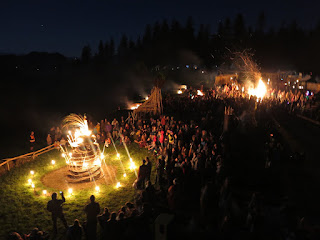 |
| Product-Market Fit |
With any new service, you target either
- niches or improved services in established markets
- an entirely untapped market
- or (product paradigm change) both.
In a musical context, however, we need to approach the terms 'new' and 'established' with care.
Where those accustomed to 12TET may find many world music instruments and their underlying conventions new, to the virtuoso ethnic player 12TET may be new. All just a matter of perspective.
Much of the existing online learning tools strongly favour the 'western' or 'classical' 12TET system. Given it's wide adoption, it makes sense to use this as a base, but our intention is to build out and away from this as quickly as possible, extending it to other cultures they are addressed by worldwide standards. There are signs this may occur quite soon.
As backdrop to the following, we should keep in mind that with the rise of robotics and automation, billions of people are likely to be divested of work, income, and, hence to some degree their mobility. On the upside, slow travel and all manner of pastimes and hobbies are likely to see a strong renaissance.
Online Or Remote Music Learning
The most likely user of an online music education platform -the technically versed and well informed learner- is quite different from those who would potentially benefit most - the virtuoso ethnic musician and the unemployed, slightly marginalized (and possibly slightly technophobic) UBI recipient.
Before trying to get an idea of specific user profiles, lets take a general look at music learner characteristics.
Now let's think about the traits an 'ideal' user might exhibit.
 |
| The Ideal User (And Platform Advocate, Hehe) |
Whoa, this is someone who knows what they want. As an entirely graphical platform, it's main appeal is indeed initially likely to be to self-motivated, strategic learners, which the crowd funding project will in one form or another certainly test.
One clear contender in this respect are members of various university (especially music) departments. The platform promises a whole slew of added-value (and hence research) opportunities - ranging from advanced visualizations, artificial intelligence (eg exercise/fingering optimization) through areas such as psychophysics (cognition, wellbeing, health) to augmented and virtual reality (situational learning).
A hot question, however, is whether users will be prepared to drift away from 12 EDO, where the bulk of technical and teaching industry investment is focussed..
Also in this group are the growing live-streaming community. This encompasses music teachers, but also musicians seeking a more direct connection and exchange with their fanbase. This is indeed perhaps the most exciting and challenging of all the scenarios under review, as it potentially includes technology developments such as augmented reality, but may well also bind in related disciplines such as psychophysics or esoterics. (However -as a belief system- dubious, an example of the latter might be a marriage between 12 EDO music, astrology, golden ratios and perceived universal harmonies).
Then there is the culturally isolated economic migrant, perhaps with time on his or her hands and driven to a certain degree by nostalgia for a lost paradise.
Another group likely to benefit from such a platform are the more or less footloose and fancy free future UBI (universal basic income) receiving globetrotter. Itinerant social musicians driven more or less by circumstance, their musical tastes are likely to be at once eclectic and individualistic. Deep knowledge in specific areas of ethnic musicology become a form of social currency, lending authority in casual teaching exchanges. :
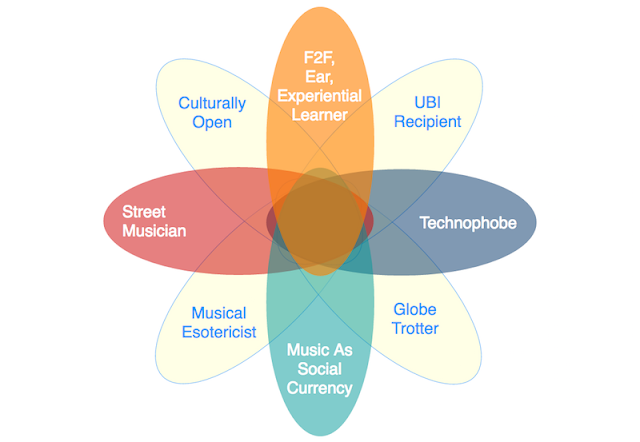 |
| The Itinerant UBI-Funded Globetrotter |
..and the local ethnic virtuoso:
 |
| The Local Ethnic Virtuoso |
The problem with these last two groupings is, I hope, immediately clear: one has little or no money and is constantly on the move, the other is with fixed location and quite possibly limited technical means.
In a word, a disconnect.
Indeed the conventional approach to product-market fit focusses around:
- Acquisition: How do users find you
- Activation: Do users have a great first experience with your product
- Retention: Do users come back and use your product?
- Referral: Do users tell others about your product?
- Revenue: How do you make money?
There is, in our case (and especially in a crowdfunding phase), something uninformed about this approach.
- Acquisition: How can users find something they don't know to look for
- Activation: How can users 'experience' a product only available as a prototype under lockdown?
- Retention: How can users be made enthusiastic enough to want to inform others?
- Referral: How can advocates gain good enough grasp of the idea to accurately inform others?
- Revenue: How do you attract crowdfunding money?
Clearly, for the crowdfunding, a very special effort needs to be made to educate users in the platform's potential. This has to some degree been achieved using the comic-book approach of the 'One URL to Animate Them All' page, the prototype videos on YouTube, Tumblr and Vimeo, and the various feature roundup pages, but people are certainly not finding their way there under their own steam.
Even looking ahead to an actual product release, the idea may well need to be taken to the user. This may involve some form of advocacy by 'ideal' users to draw in those who would benefit most. How this might happen (membership-driven networking, buddying, sponsorship, referrals, commissions) is unclear, but certainly learner thirst for knowledge is as good a starting point as any.
Clearly there is something of a journey involved. It's perhaps helpful to walk through the relations between main platform domains and actors.
Teachers and Mentors
For many years, the only way to learn to play many traditional folk instruments was to travel to their country of origin, seriously undermining any real learning continuity.
More recently, with greater economic mobility and migration, instrumental virtuosos are slowly finding their way to new markets. Tourism -at massive envonmental cost- has further eased access.
Digital technologies have made certain learning materials more accessible, but while qualitatively often good, interactivity is limited.
In parallel, partly driven by the new individualism, while interest in own, traditional, music has been noticeably on the wane, world music has been gaining traction.
Once more we need to be careful with terminology though. What to the Irish is a traditional instrument is perhaps to a Chinese a world music instrument. Irish session musicians have indeed been noting (with amusement) the number of Chinese and Japanese turning up for a year or two's instrumental learning on traditional Irish instruments.
In a digital context, however, with some exceptions the majority of world music instrument instruction, models and theory tools- are still poorly served.
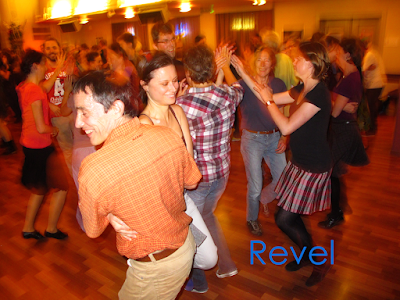 |
| Instruments and Dance Belong Together |
Moreover, the connection between music and it's long-time sibling, dance, is fast being lost. This is perhaps at it's clearest in recent session music from Ireland. Formerly essential and characteristic rhythmic instruments are increasingly policed: expected to be subtle (read 'bland'), understated - and preferably elsewhere.
With their marginalization, something of the robustness of character is forever lost.
There are, therefore, hundreds of instruments for which the core drivers for their existence are disappearing. Moreover, there is little published material in a format suitable for worldwide access: no base exercises, no stylistic guidance, little in the way of known and accessible music notation and, above all, no recognizable methodologies.
I have no doubt this information is available to native speakers in aural traditions, but the number of new players willing to learn a language in addition to an instrument is perhaps limited.
This represents a huge block of culture, which -especially if to be preserved for the future- needs to find fresh adherents.
Here a rough estimate of the undeveloped potential associated with 12TET and other music temperament and intonation systems. An X indicates market saturation (market exhausted), each tick rising potential. Three ticks indicate a more or less greenfield area.
 |
| Tonal System Market Potential |
Tablature, for example, though well established for individual 12TET instrument families (guitar, fiddle, banjo etc) is more or less unknown for other -and especially world- instruments.
Learners
As discussed in other posts, identification and curiosity are powerful drivers. As mobility increases, encounters with other cultures increase, new instrumental timbres are experienced, and opportunities for forays into world instrument learning grow.
 |
| Established Sessioneers |
An established player already has solid knowledge and experience ("musicians hear the written note"). Their needs -if any- are different to those of the beginner ("non-musicians seek visual models").
At the 'older' end of the digital media spectrum we more likely to encounter the 'social musician', a possibly retired instrumentalist, active on laptop or home computer.
At the other end of the spectrum and characterised by mobility, competitive self-interest and individualism, we have young users primarily active on a mobile device.
Many older learners will already have long and very practical musical experience. Our real beginner is more than likely young, however, may view playing an instrument as a route to community, but more likely to recognition. This is a group completely at home with social media, device fluent and open to innovation.
Clearly there is an academic market, but our focus is the generation of social value: pushing our paradigm changes into those places they can do the most good.
Clearly, this is not to say there would be no benefits to an academic market. Equally, I feel (given the depth and intensity of an academic music training) the platform clearly represents no threat.
Technology
 |
| Tech in Dance |
However, “Millennials are an experience generation, they want you to take them somewhere totally unique.”
Under the influence of, for example, ever more immersive music festivals worldwide, millennial's experience of live music is technology-dominated.
It is also a convenience-driven market. Convenience and the discipline of instrumental learning are somewhat opposing poles.
However, in uniting musical score, instrument models and theory tools in a determinedly visual context, convenience is written large.
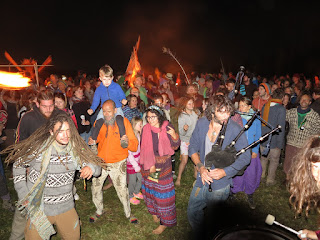 |
| Counter-Culture - Fire Festival Dance |
There is, of course, a counter-movement, which, while also quietly versed in technology, is focussed on the intimate, the spontaneous, the collective and social.
It is also far more open to direct (personal) cultural and musical influence - as long as technology plays a subordinate role.
World instruments and advanced theory tools such as tonnetze (lattices) still tend only to find real application in academia. Given their musical expressiveness, this is a great shame.
Even in areas well represented, the moment we step away from the 12TET western corset, we are more or less on our own. It is especially difficult to unearth theoretical tools applicable to non-12TET music.
In sum, it makes perhaps more sense to leverage the technological curiosity and travel-inspired, cross-cultural enthusiasm of young, knowledge-hungry learner, while writing convenience and especially visualization large.
Instruments
The market served by 12-tone, equal temperament music system is reasonably mature, well documented, and has long been dominated by a surprisingly small range of instruments, such as:
- in popular culture: keyboards, electric guitar and bass, drums
- in classical music: violin, cello, viola, piano and double bass
- in traditional music: fiddle, flute, guitar, clarinet and accordion
- in early learning: recorder, xylophone, bongos, tambourine, electronic organ
To some of these there is an undercurrent of innovation, be it self-teaching instruments, online tools, educational course advances, better teaching methods or simple the surge in the number of sensor/controllers being integrated into new instruments.
The underlying theoretical concepts, however, often remain poorly understood, undermining real genre-authentic freedoms. What use choice without understanding?
Industry
The industrial revolution brought new materials, technologies and manufacturing processes, allowing a small tsunami of instrumental innovation to take place.
 |
| Wheatstone 48-button English Concertina |
Bakelite replaced wood, machined reeds replaced hand-made ones, simple plastics replaced ivory, steel replaced the softer brass, woven and sealed fabrics replaced leather and processes earlier performed by master craftsmen became to some degree automated, flooding the market with much more affordable instruments.
In the wake of the industrial revolution came a swath of new idioms or genres.
With the later arrival of television, the life-expectancy of tastes were shortened.
If with TV change became the new normal, in the digital age it became a pest. Think drip-feed, forced obsolescence, aggressive merchandising, customer lock-in and it's antithesis, exclusivity. Innovation and manipulation have become intimately linked.
The entertainment industry's determined focus on shallow, clichéd, cosmetic idioms, a correspondingly narrow range of instrumentation, and the lock-in associated with 12TET culture, for example, result in a relentless erosion of musical diversity. Turned any way you want, it sits at the epicenter of a cultural holocaust.
Providing an opposing pole to this are the instrumental innovations progressively advancing musical frontiers. As 'on-board' instrumental teaching aids improve, there may be some overlap with the aggregator platform in focus here, but I doubt these will match it's configuration freedoms.
Cultural Identification
It surprises me how many first generation immigrant children learn an instrument native to their parent's home country.
Clearly parents wishes are a factor, but this doesn't necessarily account for the levels of virtuosity these children sometimes achieve. Never underestimate cultural identification..
Some kind souls at Wikipedia maintain a list of instruments of symbolic or cultural importance.
Though in the context of world instrumentation far from exhaustive, these could, given for the meantime continued national identification, be taken as a core target group.
Theory Tools
Music theory is a much disliked but more or less essential aspect of music. Without the basics, even the simplest of tasks can seem daunting.
Whether accompaniment, harmonization, improvization, composing, criticism, or simply the ability to judge genre authenticity, it's difficult to escape.
Perhaps the most significant challenge in practice is the difficulty applying dry theory to the moving target of a piece of music.
Driven by score and directly linked with instrument models, however, theory tools acquire both immediacy and context. Mappings between written note, fingered tone and abstract theory model can be followed visually, and at the user's pace.
Score playback can be slowed or stepped through to follow the exact relationship between each, revealing areas of what you might call meta-knowledge: take, for example, the circle of fifths:
- different types of chord maintain their shape regardless of pitch
- major triads can be turned into minor ones by reflection
- diminshed, augmented, suspended, sixth, and seventh suspended chords show symmetry.
- diminished sixth chords are, due to their high symmetry, key ambiguous
- the circle of fifths, however, is just one of many visual theory models at our disposal. The aggregator hauls these from the depths of musical consciousness and places them at our immediate -and context rich- disposal.
Genre
Genre is -by any measure- remarkably difficult to quantify and visualise. Highly subjective and hence characterizable in many different ways, drawing even the most general of classifications is challenging.
From an aggregator platform perspective, genre is, however, the primary filter mechanism in narrowing down musical sources, instrumental choice and supporting tools.
Challenges? Instruments, playing techniques and elements of style or method are shared across multiple genre groupings. The cosmetics of fashion often blur the remaining differences in a flurry of revivals, neo-movements and suspect, revenue-driven waves of nostalgia.
We could, of course, restrict our focus to traditional and world music instruments and styles, which have evolved over millennia. Though similarities exist here too of course, their spread or parallel development can be traced through historical records, their particular idioms often powerful and unique in character.
Even here, however, the often rapid adoption of 'alien' instruments into an existing genre's instrument spectrum can complicate things. The guitar and bouzouki, for example, are already well established in Irish music, yet both are -in a historical context- very recent newcomers. Where do we draw the line?
Media
The end goal or vision of this platform is (in a P2P form) grass-roots, person-to-person enablement, but this makes less sense in areas where enablement is already high.
At a certain level (printed and recorded material, for example), the 12TET music market is saturated, but -viewed from this market's perspective- this breaks down for a wider range of world music instruments and associated theory tools.
Our media context is entirely digital, yet much of the existing teaching and informational base is hardcopy or (YouTube) video based. A paradigm change seems inevitable, but effort is unavoidable.
The long-term benefit is of course instant and geographically unrestricted access.
Disruptive Change
This platform will -potentially- have something for all. It will certainly ease -in some cases even remove- the following problems:
- sharing, P2P and for the current session, of own music notation
- wide range of instrument models, including fingering and roadmaps
- remote teacher access
- learning interrupts due to time and distance
- travel time and cost
- access to instrument builders
Disruption need not necessarily carry negative connotations. It can, as here, significantly ease a situation across wide range of constraints. The free online HTML CSS JavaScript compressor tool offers the easiest way to minimize web files.
Keywords
online music learning,
online music lessons
|
distance music learning,
distance music lessons
|
remote music lessons,
remote music learning
|
p2p music lessons,
p2p music learning
|
music visualisation
music visualization
|
musical instrument models
interactive music instrument models
|
music theory tools
musical theory
|
p2p music interworking
p2p musical interworking
|
comparative musicology
ethnomusicology
|
world music
international music |
folk music
traditional music
|
P2P musical interworking,
Peer-to-peer musical interworking
|
WebGL, Web3D,
WebVR, WebAR
|
Virtual Reality,
Augmented or Mixed Reality
|
Artificial Intelligence,
Machine Learning
|
Scalar Vector Graphics,
SVG
|
3D Cascading Style Sheets,
CSS3D
|
X3Dom,
XML3D
|









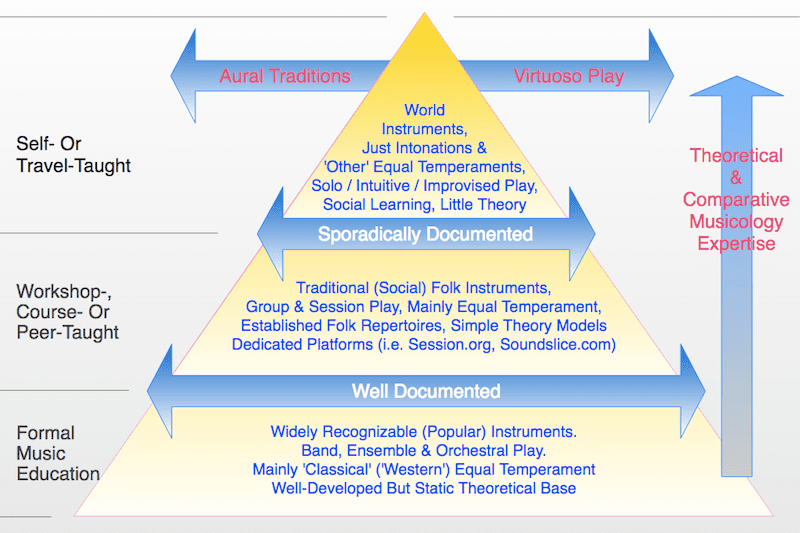

Comments, questions and (especially) critique welcome.